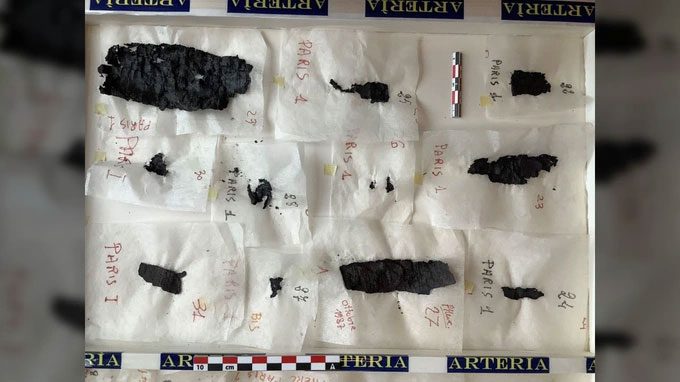The book was severely damaged after the eruption of Mount Vesuvius nearly 2,000 years ago, but artificial intelligence (AI) can recreate passages from this work.
This is an ancient book nearly 2,000 years old, made from papyrus and discussing the dynasties that succeeded Alexander the Great. It was partially destroyed due to the effects of the Mount Vesuvius eruption in 79 AD.

The book was heavily damaged, and AI has restored the destroyed text. (Photo: Michèlel Hannoosh).
Scientists at the University of Michigan and the University of Kentucky have utilized machine learning technology (a subset of AI) to perform computed tomography (CT) scans with thousands of X-rays to create 3D digital images.
This has enabled experts to reconstruct the faint text in this ancient book.
Previously, in 1804, the book was given to Napoleon Bonaparte (the brilliant leader of France), who brought it to the French Institute in Paris, where it has remained to this day. In 1986, scientists attempted to open the book but only caused further damage.
Professor of Classical Studies, Richard Janki from the University of Michigan, revealed: “The book contains the names of some Macedonian dynasties and generals of King Alexander, after he died in 323 BC, his empire dissolved.”
The ancient book was lost from the Villa of the Papyri in Herculaneum—a city that was destroyed when Mount Vesuvius erupted, now known as Ercolano, Italy.
This villa housed many works by the philosopher Philodemus (who lived around 110 BC to 30 BC).
Many Mysteries
Much of this ancient book remains a mystery; its author is unknown, and it is unclear why this book ended up in a villa in Italy.
Janki notes that many texts in the villa were written by Philodemus discussing philosophical topics.
The research team hypothesizes that the text may have been borrowed by the philosopher and never returned. He may have used it as a reference when writing his work “On the Good King According to Homer.”
Scientists continue to refine the restoration of this ancient text and will reveal new discoveries about it.


















































